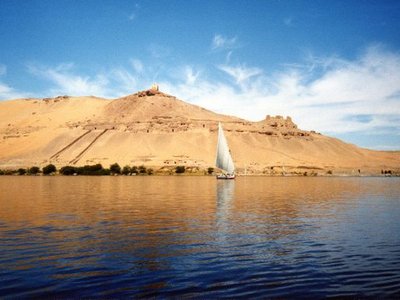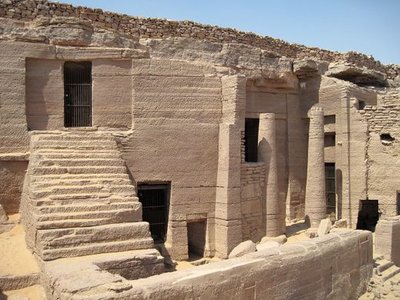Tombs of the Nobles


Rising up along the west
bank of the Nile is a relatively little-visited archaeological gem, the Tombs of the Nobles, also called Qubbet el-Hawa, where ancient carvings and hieroglyphics still exist alongside Christian murals and Muslim monuments.
This sand-swept cliffside necropolis is located a short ferry ride across the river from Aswan, and can be seen from all around the city. The site is home to hundreds of rock-cut tombs housing the remains of high-ranking and noble Egyptians from antiquity. Many tombs date back as much as 3,800 years. They are decorated with paintings, hieroglyphics, and statues, and some of the larger tombs can be entered and explored.
First discovered by British archaeologist Lord Greenville in 1885, the cemetery is still being excavated to this day. The list of notable residents is long, but some of the more famous burials from the Old and Middle Kingdom include the tomb of Harkhuf—famous for being covered in inscriptions that give a glimpse into the culture of the era—governors of the Egyptian Pharaohs Pepi II and Amenemhat II and the Lady Sattjeni from the ruling family of Elephantine.